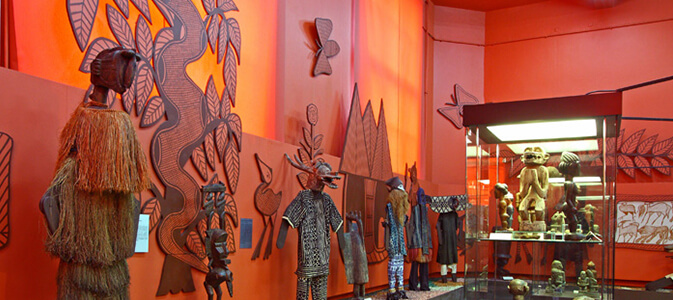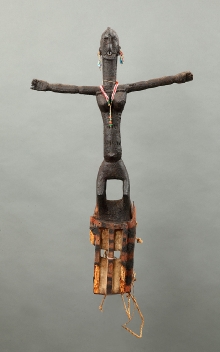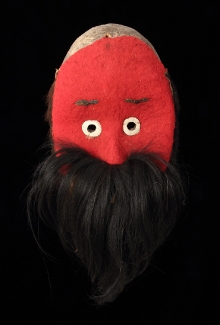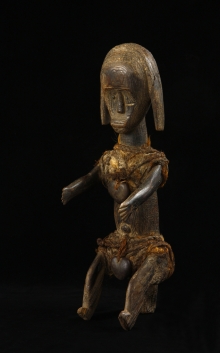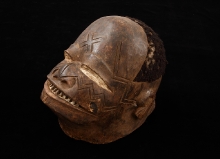Objects classified as works of African art rarely play aesthetic role in Africa. They are strictly related to the believes, religions and rituals.
The exhibition entitled Art of Africa – between a Mask and a Fetish presents numerous objects from the collection of the National Museum in Szczecin.
The mask is an important and lasting element of culture in Africa. As a material good it has no serious value. But put on a face, it changes the owner into a ghost or a mythic character. It never works on its own. It is always accompanied by specific requisites and a costume covering the whole body. This is the way the exhibition shows figures wearing masks: kponyungo (Senufo people, Ivory Coast), nimba (Baga people, Guinea), nwantantay (Bobo people, Burkina Faso), teegla (Dan Ngere people, Ivory Coast), ntomo (Bambara people, Mali) and ngontang (Fang people, Gabon). Whatsmore, an element of the rituals is dynamic dance. In the exhibition it is illustrated by a procession of Dogon masks from Mali moving in a circle (including figures wearing bull, sirige, kanaga and adagaye masks).
In the opinion of an African, surrounding world – both bush, and city streets – is dangerous and strange, inhabited by evil forces and people to whom they are subordinate. It is impossible to survive there without the support of supernatural powers. They can provide peaceful life, good crops or numerous offspring and stave off the bad – heal from illness or even help avoid death. In the exhibition cases located in the middle of the room there are wooden and stone sculptures and numerous fetishes − objects.
Depending on the ethnic group, forms and materials of such objects vary. They can be wooden sculptures with distinctively shown attributes of their supernatural power (e.g. Nkissi nkonde fetishes from the Democratic Republic of the Congo), pieces of wood with schematic features of a face, as well, as a small bundles or vessels with magical content. Sculptures and other magical objects are grouped according to peoples they origin from: Mayombe, Bakongo (the Democratic Republic of the Congo), Dogon, Bambara (Mali), Baule, Senufo (Ivory Coast), Kissi (Guinea), Joruba (Nigeria), Somba (Benin), Lobi (Burkina Faso), Ashanti (Ghana).
The exhibition is shown in a scenography inspired by drawings, with which so called korhogo textiles from Ivory Coast are decorated.
